Most paddlers have some sort of roof rack system to get their kayak to and from the water with ease and confidence. The systems vary, and, no matter what rack you have or if you are transporting a kayak without a roof rack, there are some basic principles to follow—and some common mistakes to avoid. Read on for ten expert tips to help you—and your boat—hit the road with confidence.
Top 5 roof rack dos
1 Do upgrade your factory rack system
Upgrade your factory rack system to a base rack from a quality roof rack company. This is a quality set of feet and bars upon which all other rack accessories can be mounted.
2 Do ensure you purchase the correct rack
Ensure you purchase the correct rack for the model and year of your vehicle. If it doesn’t say it’s made for your car, don’t trust it.

3 Do place your bars as far apart as possible
Place your bars as far apart as possible. The less the boat hangs past the front and rear bars the more the boat is supported in its straight-ahead position, and the less the boat is likely to turn in the wind.
4 Do periodically check and tighten the fasteners
Periodically check and tighten the fasteners securing the rack to your vehicle. Most racks are rubber mounted in some way. As the rubber compresses and hardens with age the friction holding it in place reduces. The only thing worse than losing one boat from the rack is having the entire rack blow off.
5 Do lube and periodically use the keys in the locks
Lube and periodically use the keys in the locks. Roof racks are exposed to the brunt of weather for all four seasons. They typically don’t ever move and when it’s time to remove them, sell the car or perhaps wax it, you may find the reason they weren’t stolen is because they are seized in place.
Top 5 roof rack don’ts
1 Don’t overload your factory racks
Don’t overload your factory racks. Most factory racks are recommended for a maximum load of 70 pounds, and any sort of tension applied to the bars will warp them out of shape. Most everyone breaks this rule.
2 Don’t get bars that extend past your roof
Don’t get bars that extend past your roof unless they are well overhead or you like the Rocky look. Once you have the correct feet for your vehicle you can purchase up to 78-inch-wide bars. The inconvenience of installing wider bars every time you want to carry two tandem canoes or kayaks side-by-side is far less than the pain from walking into them with your face. Trust us. Do as I say, not as I do. All my bars are 78 inches; they stay on all the time.
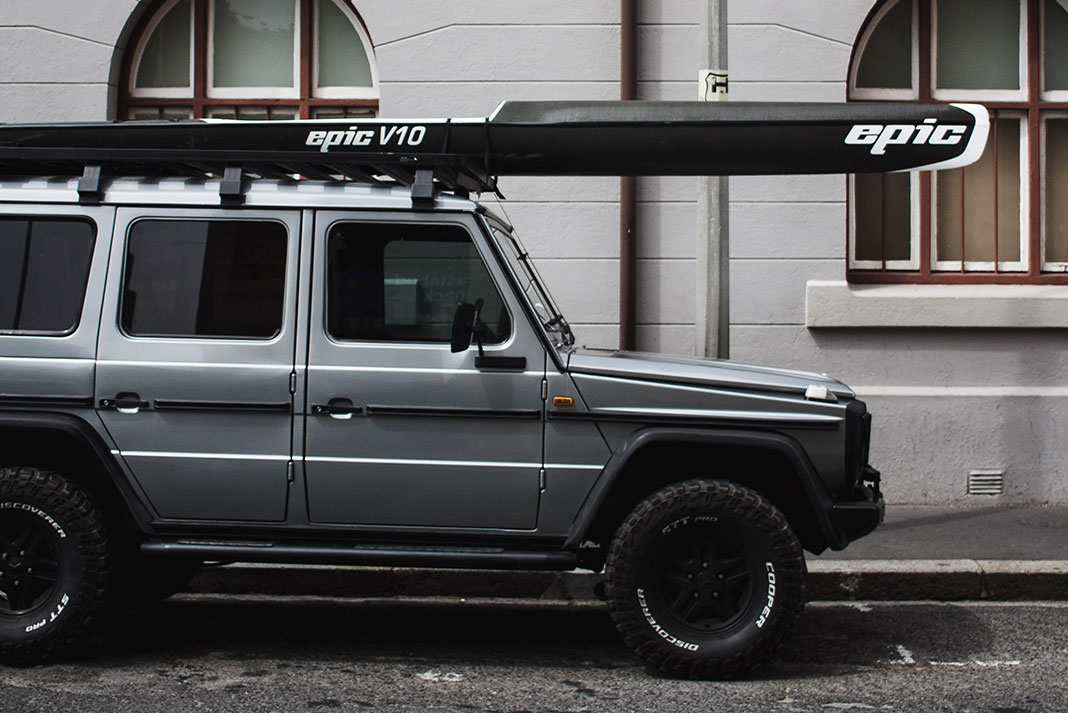
3 Don’t leave them up
If you use uprights, don’t get in the habit of leaving them up. We all know someone who has peeled off bikes or boats while in a parking garage. From what we’ve heard, the driver always instantly knows the source of the horrible sound.
4 Don’t go through the car wash
Automated car washes should be avoided, even the no-touch ones. Yes, you’ve probably gone through okay, but you had your fingers crossed didn’t you? The fuzzy-roller car washes are sketchy on the best of days and even the no-touch car washes have sensors that “see” the surface of the vehicle but don’t always “see” the narrow tube bars of our roof racks. Once your wheels are locked into the tracks and the light turns green you’re committed.
5 Don’t fess up
Lastly and most importantly, if you lose a boat, luggage or your entire rack, DON’T admit it. Instead, try these lines: “The missing gel-coat and smashed rudder? That was from an epic surf landing. You should have seen it.” Or, “Where’s my boat? Umm. I just came to volunteer and help with the race. Then I’m going rollerblading.”
This article originally appeared in Paddling Magazine Issue 65. Subscribe to Paddling Magazine’s print and digital editions here, or download the Paddling Magazine app and browse the digital archives here.
Looking for adventure, or whatever comes our way. | Feature photo: Nicholas Spooner


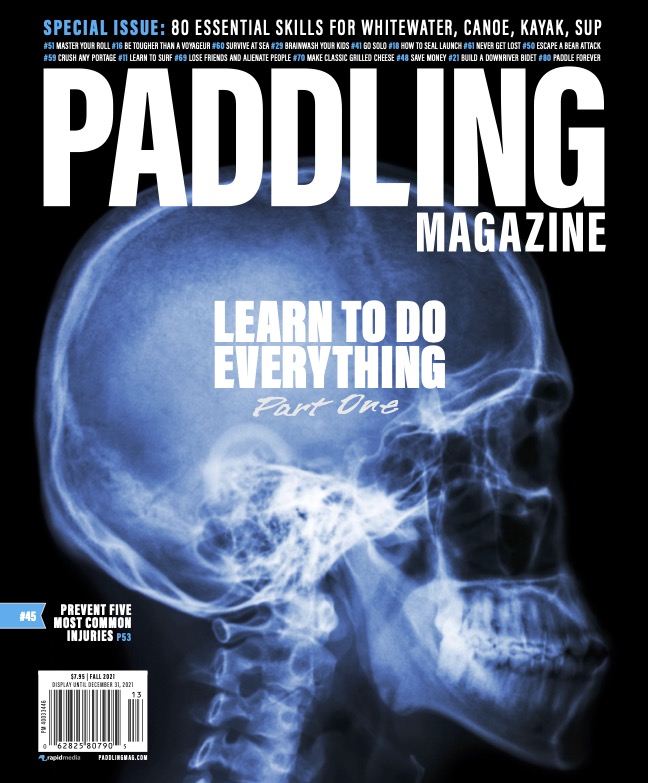
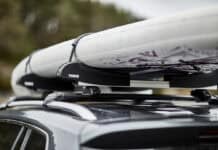
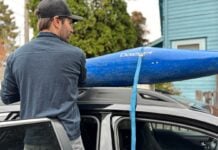
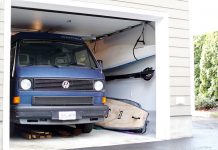
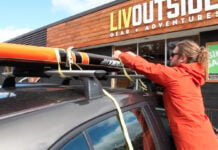



Don’t rely on tying the kayaks to the rack. I tend to use a bungy to stop them blowing off while doing the tying down.
The kayaks’ ends are tied to the vehicle, roped with an inverted V. This stops twisting with side winds, takes the stress off the roof and rack and should securely fasten them to the vehicle.
“Ensure you purchase the correct rack for the model and year of your vehicle. If it doesn’t say it’s made for your car, don’t trust it.”
However this is very likely not the case. In 40+ years of transporting sea kayaks I’ve yet to find a rack specifically for any of my vehicles. I’ve also never had a problem with any racks.
I am relatively new to kayaking. I have only owned one roof rack, and the mounts for my rack were specifically designed for my vehicle. So you can find quality racks with custom mounts at competitive prices.